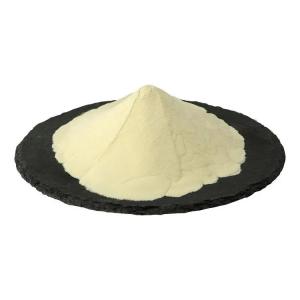The potential therapeutic value of phospholipids
Time:2025-07-30Phospholipids are important components of biological membranes and are abundant in the nervous system. Abnormalities in their structure and function are closely related to the occurrence and development of neurodegenerative diseases, and their potential therapeutic value has received widespread attention in recent years.
I. Protective Effects of Phospholipids on the Structure and Function of Nerve Cell Membranes
The fluidity and integrity of nerve cell membranes are the basis for the normal physiological functions of neurons, and phospholipids are the core components maintaining membrane structure. For example, phosphatidylcholine and phosphatidylethanolamine can regulate the lipid bilayer structure of the membrane, maintain membrane fluidity, and ensure the normal functions of proteins such as ion channels and receptors during nerve signal transmission. In Alzheimer's disease (AD), the phospholipid content in nerve cell membranes in patients' brains decreases significantly, leading to reduced membrane fluidity and impaired synaptic transmission efficiency. Supplementing exogenous phospholipids or promoting endogenous phospholipid synthesis can improve the stability of membrane structure, enhance synaptic plasticity, and thereby alleviate neuronal dysfunction.
II. Role of Phospholipids in Regulating Neuroinflammation
Neuroinflammation is a common pathological feature of various neurodegenerative diseases (such as Parkinson's disease and AD). Overactivated microglia and astrocytes release pro-inflammatory factors, exacerbating neuronal damage. Components such as phosphatidylserine (PS) in phospholipids can exert anti-inflammatory effects by regulating inflammatory signaling pathways. Studies have found that PS can inhibit the activation of pro-inflammatory pathways such as nuclear factor-κB (NF-κB) in microglia, reduce the release of inflammatory factors such as tumor necrosis factor-α (TNF-α) and interleukin-1β (IL-1β), thereby alleviating neuroinflammatory responses and protecting neurons from damage. In addition, phospholipids can maintain the immune homeostasis of the nervous system by regulating the activity of immune cells.
III. Impact of Phospholipids on Amyloid Metabolism
In AD, abnormal aggregation of β-amyloid (Aβ) is one of the main pathological features. Phospholipids can act by affecting the production, aggregation, and clearance of Aβ. For example, phosphatidylinositol can regulate the activity of γ-secretase, reducing Aβ production; some phospholipid molecules can bind to Aβ, inhibiting its fibrillary aggregation and reducing its neurotoxicity. At the same time, phospholipids can promote the phagocytosis and clearance of Aβ by microglia, reduce Aβ deposition in the brain, and delay the progression of AD.
IV. Potential of Phospholipids in Nerve Repair and Regeneration
Neurodegenerative diseases are often accompanied by neuronal apoptosis and axonal damage, and phospholipids are important material bases for neuronal repair and regeneration. Choline, a metabolite of phosphatidylcholine, can participate in the synthesis of acetylcholine, improving neurotransmitter transmission function; phospholipids can also provide necessary lipid raw materials for neuronal regeneration, promoting axonal growth and synaptic reconstruction. In Parkinson's disease models, supplementing phospholipids can increase the survival rate of dopaminergic neurons and improve motor dysfunction, and its mechanism may be related to promoting the expression of neurotrophic factors and inhibiting oxidative stress.
V. Challenges and Prospects
Although the therapeutic potential of phospholipids in neurodegenerative diseases has been supported by many studies, there are still some challenges, such as the targeting delivery efficiency of phospholipids in vivo and the synergistic mechanism of different phospholipid components, which have not been fully clarified. Future research needs to further explore the interaction between phospholipids and targets related to neurodegenerative diseases, optimize the administration methods of phospholipid preparations, and provide a more solid theoretical basis for their clinical application. With the deepening of research, phospholipids are expected to become new candidate drugs for the prevention and treatment of neurodegenerative diseases.


 CN
CN





